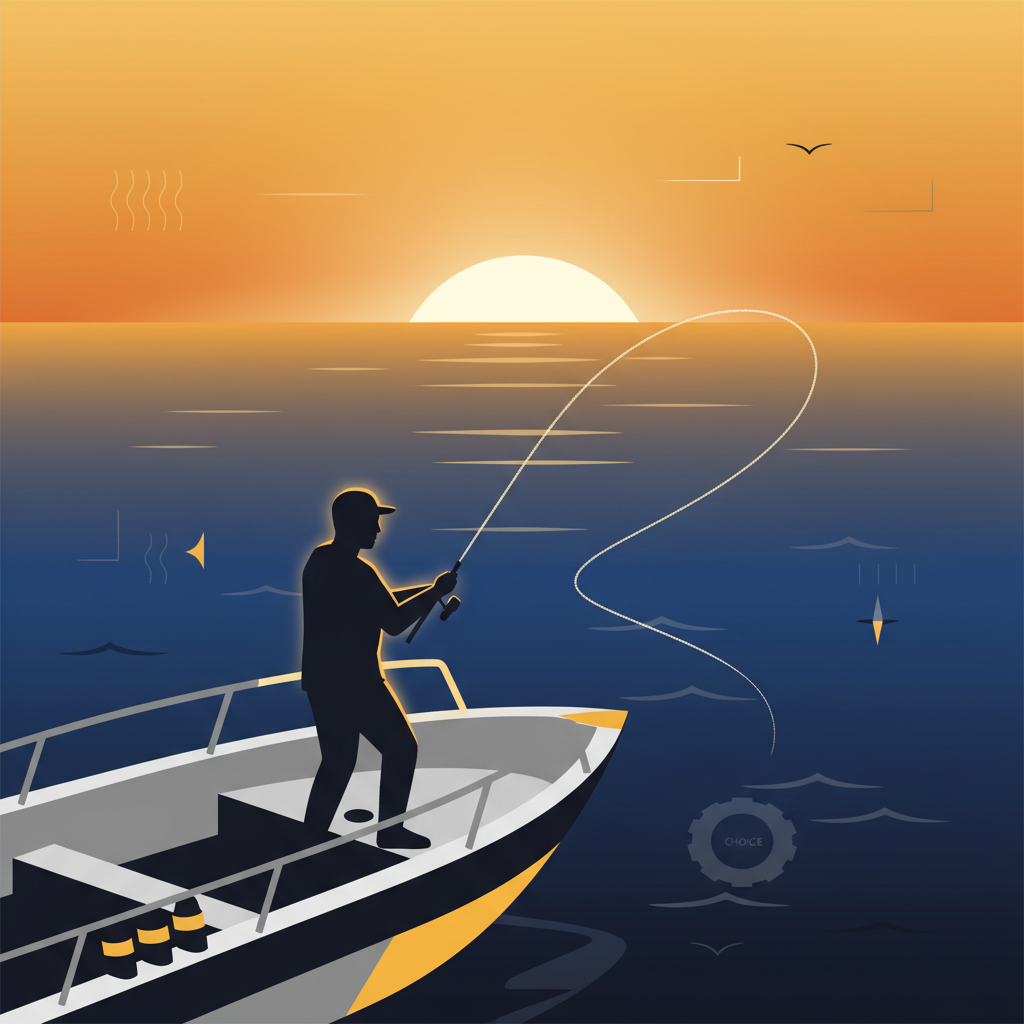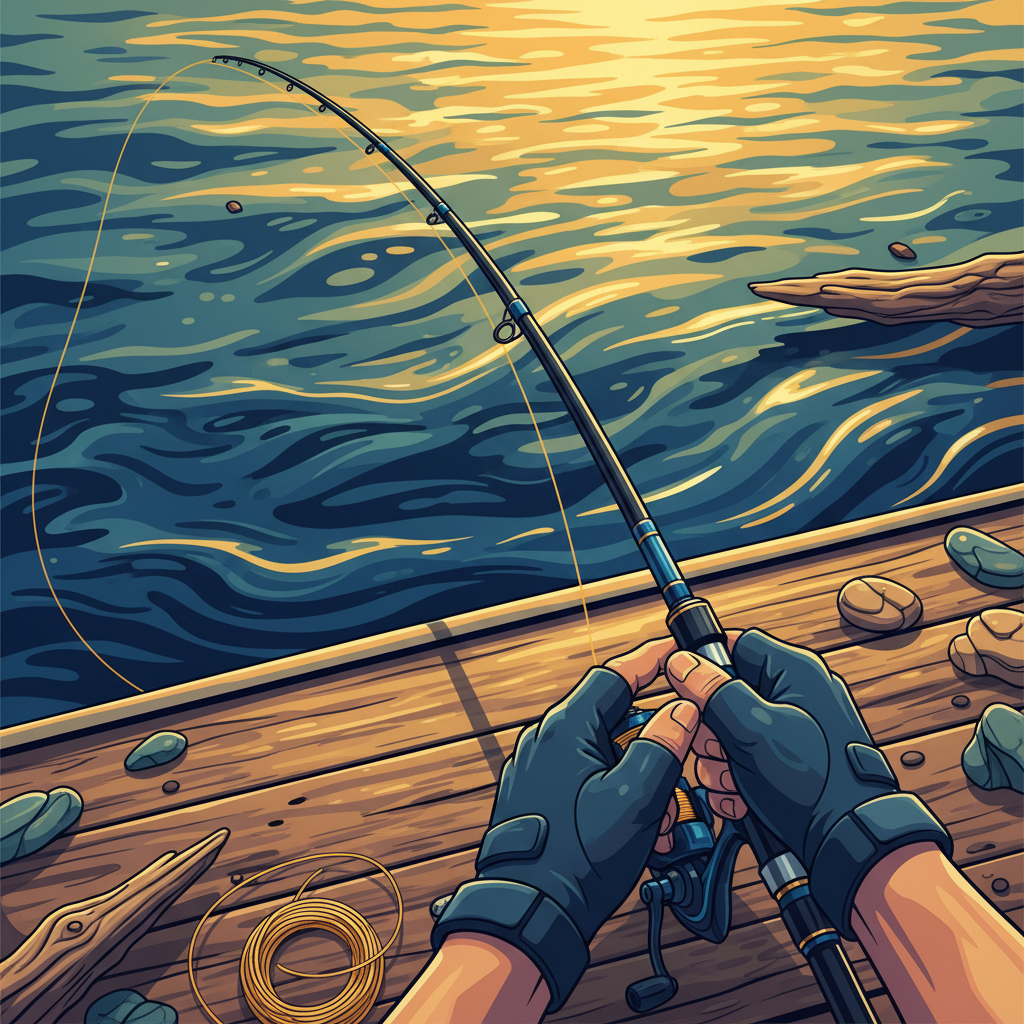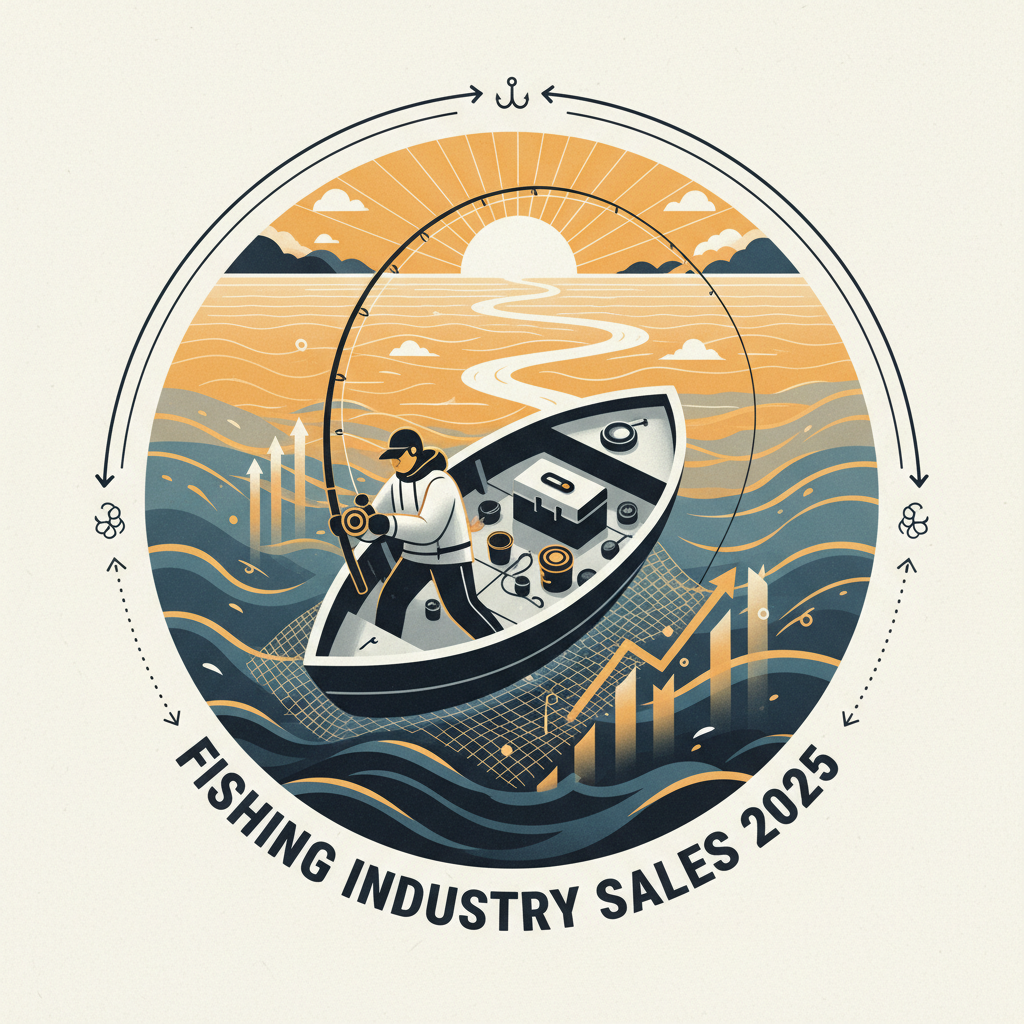Your Cart is Empty
fishing in dam
Key Takeaways
- Dam tailraces are often overlooked but can yield some of the heaviest catches.
- Many anglers crowd common spots like boat ramps and piers, missing prime fishing areas.
- Concrete spillways create current-stunned baitfish, attracting feeding frenzies.
- Fishing in these areas can result in intense action that tests your rod's strength.
Table of Contents
- Unlocking Hidden Giants, Why Dam Fishing is a Game-Changer
- Dam Fishing, Decoded: What Makes Dams Fish Magnets?
- Dam Types & Their Impact on Strategy
- Target Species You'll Find at Dams
- Reading the Water: How Dam Currents Unlock Monster Bites
- Seasonal Dam Fishing: When to Show Up for Max Results
- Essential Gear for Dominating the Dam
- Top Rigging & Knot Tactics for Dam Success
- Find the Spot: How to Pick Damside Money Zones
- Ready to Dominate Your Local Dam
Unlocking Hidden Giants, Why Dam Fishing is a Game-Changer
Some of the heaviest stringers I've hauled came from overlooked dam tailraces. While weekend warriors crowd boat ramps and pier ends, smart anglers slip down to concrete spillways where current-stunned baitfish create feeding frenzies that'll bend your rod double.
Here's the deal: fishing in dam structures isn't just productive, it's where trophy hunters go when they're serious about results. More hookups, less guessing, and the kind of tug-of-war that'll test every knot you tie.
What You'll Get: Tactical how-to for reading dam water, on-the-water gear recommendations backed by lab data, jaw-dropping species lists by region, and proven techniques for every skill level from first-time dam casters to seasoned pros.
Dam Fishing, Decoded: What Makes Dams Fish Magnets?
 braided fishing line spool ideal for freshwater and saltwater angling, durable and abrasion-resistant.">
braided fishing line spool ideal for freshwater and saltwater angling, durable and abrasion-resistant.">
Dam fishing means targeting fish in or around man-made barriers that disrupt natural river flow, concrete spillways, earthen embankments, gravity structures, or lock systems. These aren't just obstacles; they're fish concentration machines.
For anglers looking to maximize their catch, using a super sleek & smooth braided fishing line can make a significant difference when fishing in dam environments.
Why Dams Load Up With Fish
- Oxygen-rich water: Turbulent spillway flow supercharges dissolved oxygen levels
- Baitfish traps: Current creates eddies and seams where disoriented prey gets pinned
- Ambush points: Deep scour holes and current breaks provide perfect predator staging areas
- Food concentration: Everything from insects to injured baitfish gets funneled through narrow zones
Dams aren't just for bank-bums; they're where tournament pros scout for personal bests when they need guaranteed action.
Dam Types & Their Impact on Strategy
Not all dams fish the same. The type of structure dictates everything from current patterns to fish positioning, and understanding these differences separates limit-fillers from empty-cooler trips.
Concrete vs Earth vs Gravity Dams
- Concrete Dams
- Sharp drop-offs, stronger tailrace current, clearly defined ambush zones with predictable current seams
- Earthen Dams
- Gradual breakup patterns, soft-bottom eddies, brushy cover along spillway edges
- Gravity/Multiple Gates
- Variable water flows, shifting hotspots based on gate operations, complex current interactions
Pro Tip: Water release schedule equals fish movement schedule. Call the dam operator or check online flow data, when they're releasing water, predators know baitfish are about to get hammered through the spillway.
Target Species You'll Find at Dams

Dams concentrate more species variety than most anglers realize. From surface-busting stripers to bottom-hugging flatheads, these structures create habitat for everything that swims.
- Bass: Largemouth, smallmouth, and stripers stage in current breaks and deep pools
- Catfish: Blues, channels, and flatheads patrol spillway outflows for stunned baitfish
- Panfish: Crappie and bluegill hold in slack water eddies near structure
- Walleye: Hunt current seams during low-light periods
- Trout: Tailwater dams create cold-water fisheries below warm impoundments
- Rough fish: Shad, carp, and suckers provide forage base for predators
Species Spotlight: Striped bass and big catfish stage below spillways because the turbulent water disorients baitfish and creates easy feeding opportunities. These predators position just outside the main current where they can dart in to grab stunned prey.
Reading the Water: How Dam Currents Unlock Monster Bites
Dam currents aren't random chaos, they follow predictable patterns that smart anglers use to pinpoint exactly where fish stage. Understanding these water movements turns guesswork into surgical strikes on productive zones.
Current Basics: Boil, Seam, Eddy, and Dig-Out
- Boil: Turbulent surface water directly below spillway where current hits shallow areas
- Seam: The visible line where fast current meets slower water, prime feeding zone
- Eddy: Circular current behind obstructions where fish rest and ambush prey
- Dig-Out: Deep scour holes carved by current, winter holding areas for big fish
Fish the Seam: Position your lure or drift right at the edge of fast and slow water. This is where predators wait for current-stunned baitfish to get pushed into easy striking range.
Fish position themselves strategically in these current patterns. Eddies and back-sides provide resting spots and ambush points. Fast water delivers oxygen and baitfish, while slow slicks offer easy pickings for opportunistic feeders. The spillway spillline acts like a bait conveyor belt, constantly delivering food to waiting predators.
Seasonal Dam Fishing: When to Show Up for Max Results

Timing your dam trips with seasonal patterns dramatically increases your odds of connecting with trophy fish. Each season brings different opportunities and challenges that require tactical adjustments.
- Spring Flood Season
- Migration and staging period, your best shot at personal bests. High water pushes baitfish through spillways, triggering aggressive feeding responses from predators.
- Summer Heat
- Focus on night bite below dams and shaded structure above. Fish move deep during daylight hours but become active in cooler water near spillway outflows.
- Fall Transition
- Baitfish chase intensifies as predators bulk up for winter. Stable flow triggers consistent feeding patterns, making this prime time for numbers and size.
- Winter Lockdown
- Target deep pools and time trips for midday warm-up periods. Fish metabolism slows, but concentrated schools in thermal refuges can produce steady action.
Regional Variations: Northern tailwaters often produce better trout fishing in winter, while southern warm-water impoundments see bass and catfish action year-round with peak periods during spring and fall transitions.
Essential Gear for Dominating the Dam
Dam fishing demands equipment that can handle distance casting, heavy current, and abrasive structure. The right gear setup means the difference between landing trophies and watching them swim away with your tackle.
Rods and Reels
Rods: 7-foot or longer medium-heavy to heavy fast action rods provide the backbone for distance casting and fish control in current. The extra length helps manage line in moving water while the fast taper drives hooks home on long-distance hooksets.
Reels: High-capacity reels with fast retrieve ratios handle long casts and quick line pickup when fish run toward structure. Bank anglers need 4000-size spinning reels minimum, while boat fishermen can opt for baitcasters with 7:1 gear ratios or higher.
Line Selection: Why Braid Dominates
Braided line wins at dams for three critical reasons: diameter advantage, zero stretch for sensitivity, and abrasion resistance against concrete and rock. Beyond Braid 8X at 30-pound test measures just 0.23mm diameter compared to 0.33mm for equivalent mono, that's 30% diameter savings translating to longer casts and less current drag.
For anglers who want a dedicated option, the 8X Strand Braid is engineered for ultra performance in both saltwater and freshwater dam environments.
Pros of Braid for Dam Fishing
- Thinner diameter cuts through current with less bow
- Zero stretch provides instant hooksets at distance
- Superior abrasion resistance on concrete and rock
- Higher capacity means more backing for long runs
Cons to Consider
- Requires fluorocarbon or mono leader for invisibility
- More expensive upfront than monofilament
- Can be challenging for beginners to manage
Leader Selection: Fluorocarbon or heavy mono leaders from 15 to 50 pounds depending on target species. The leader provides shock absorption and invisibility while the braid mainline handles the heavy lifting.
Top Rigging & Knot Tactics for Dam Success
Strong knots mean the difference between landing trophies and telling fish stories. Dam fishing puts maximum stress on connections, current, structure, and fighting fish all test your knot strength simultaneously.
Go-To Knots for Braid-to-Leader Connections
The FG Knot retains 73-81% of braid strength while maintaining a low profile for smooth casting through guides. Lab testing shows this knot consistently outperforms alternatives when connecting thin braid to thicker leader material.
Palomar and Fish-N-Fool knots test 8-15% stronger than Uni knots when using braided mainline. Our lab pulls demonstrate Palomar holds 23.5 pounds on 25-pound Beyond Braid, while Uni knot averages 21.7 pounds under identical conditions.
Practice at Home: Master the FG knot before your trip, use a phone charger cable if you don't have braid handy. Muscle memory prevents fumbling in low light or cold conditions.
Terminal tackle selection depends on current strength and target species. Heavy jigs and sinkers penetrate fast water, while lighter presentations work in eddies and slack water zones. Always carry backup rigs pre-tied on leader material, snags happen, and quick re-rigging keeps you fishing instead of tying.
For more tips on essential gear and tools, check out our fisheries tools guide.
Find the Spot: How to Pick Damside Money Zones
Successful dam fishing starts with identifying productive water before you make your first cast. Smart scouting separates consistent producers from weekend warriors who fish the same crowded spots everyone else hits.
- Map Study: Use topographic maps or fishing apps to locate outflow areas and tailrace channels before leaving home
- Bank Walking: Scout for cut-ins, broken rock, bridge pilings, and visible current seams that concentrate fish
- Electronics: Boat anglers should scan for underwater structure and suspended baitfish using side-scan sonar
- Water Reading: Look for stained versus clear water lines and major current breaks that create feeding zones
Test This Weekend: Try two different spots during your next dam trip, direct outflow for active fish and an eddy 50 yards downstream for numbers. Compare results and adjust your approach accordingly.
Productive zones change with water levels and seasonal patterns. What produces during spring floods may be completely different from low-water summer conditions. Keep detailed notes on water levels, weather conditions, and fish activity to build a pattern database for your local dams.
Pay attention to other anglers' success, but don't follow the crowd blindly. Often the best fishing happens away from obvious spots where fish feel less pressure and feed more aggressively. For a global perspective on dam fisheries, see this external resource from the FAO.
Ready to Dominate Your Local Dam
Dam fishing rewards anglers who understand current patterns, seasonal timing, and proper gear selection. The combination of oxygen-rich water, concentrated baitfish, and predictable structure creates consistent opportunities for trophy catches when you apply the right tactics.
Success starts with reading water correctly, fish the seams where fast meets slow, target eddies for ambush predators, and time your trips with seasonal migrations. Quality braided line like our 8X series gives you the diameter advantage and sensitivity needed for long-distance hooksets in heavy current.
Your Next Step: Pick one dam within driving distance and commit to learning it thoroughly. Master the seasonal patterns, water reading, and productive zones rather than bouncing between different locations.
The best dam anglers combine preparation with adaptability. They study water releases, practice knots at home, and adjust tactics based on conditions rather than fishing the same way every trip. Most importantly, they respect the power of moving water and prioritize safety over any fish.
Ready to upgrade your dam fishing setup? Check out our Beyond Braid Spool Guide for custom line recommendations based on your target species and local conditions. Test these tactics with quality gear, and your next weekend could produce a new personal best. For further reading on the challenges and science of dam fisheries, visit this external resource from Cambridge University.
Frequently Asked Questions
Is it good to fish at a dam?
Fishing at a dam can be excellent because dams create unique water conditions that attract various species. The structure provides cover and concentrates baitfish, making it a hotspot for predatory fish. Plus, the fluctuating water levels often trigger feeding frenzies. It’s a tactical spot that rewards anglers who understand the flow and fish behavior.
How do you catch fish in a dam?
To catch fish in a dam, focus on areas where current meets still water, like spillways, gates, and outlet pipes. Use heavier gear to handle the flow and cast upstream, letting your bait or lure drift naturally with the current. Adjust your retrieve speed to mimic injured prey struggling against the flow. Patience and precise casting are key since fish often hold tight to structure and ambush passing prey.
What is the best bait for dam fishing?
Live bait like shad, minnows, or worms work great because they naturally thrive in dam environments and attract predators. For artificial options, crankbaits, jigs, and soft plastics that imitate baitfish or crawfish are proven winners. Match the hatch, observe what forage is present and replicate size and color. Bright or high-contrast colors can help in murkier dam water.
Where is the best place to fish in a dam?
Target the edges of the dam structure where current changes, spillways, intake pipes, and rocky drop-offs are prime real estate. Fish often stack up near these choke points waiting for food to pass. Also, look for submerged trees, brush piles, or ledges around the dam’s basin. These spots offer both ambush points and shelter, increasing your hookup chances.
Should you fish above or below a dam?
Both above and below a dam can be productive, but they offer different opportunities. Above the dam, calmer waters and abundant cover attract bass and panfish, while below the dam, oxygen-rich currents create active feeding zones for species like catfish and striped bass. Generally, fishing below the dam’s outflow is more tactical due to concentrated bait and aggressive predators, but don’t overlook upstream slack water and drop-offs.
Do fish get caught in dams?
Yes, fish can get caught or trapped in dam structures, especially during low water or drawdown periods. Submerged debris, narrow passages, and restricted flow areas can hold fish temporarily, making them easier targets. However, this also means fish are more vulnerable to fishing pressure, so approach these spots with finesse and respect to avoid spooking them.




